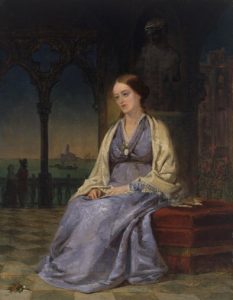Originally published on Forbes.com Apr 6th, 2013
Megan Marshall’s new biography of Margaret Fuller has been getting quite a bit of press and great reviews. Being tax season and all, I have not managed to get through it yet. Nonetheless, there was no way I was going to miss Ms. Marshall’s appearance at the Concord Public Library last night to present Margaret Fuller In Love. My covivant (CV) and I always take Friday night off even in the most extreme heat of tax season. It was a little tough convincing CV that an historical lecture was the way to spend our Friday night, but I have already paid in advance by going to Lord of The Dance and have had my sentence to Blue Man Group confirmed. I can’t complain, because I am having the easiest tax season since I started having tax seasons, while CV is having a particularly tough one.
The Setting
Even though the building was erected decades after Margaret Fuller’s tragic death, there was no better setting to hear from her latest biographer. Ms. Marshall was standing at a podium in front of a seated statue of Ralph Waldo Emerson. Busts of other Transcendentalists were looking down on the crowd. And it was a crowd. CV was skeptical that we would need to arrive early. As it turned out we barely got seats. Leslie Perrin Wilson, Curator of Special Collections, who introduced Megan Marshall , told me that they estimated 160 people were present in a room designed for 140. I noticed Dorothy Emerson who had played such a big role in the Margaret Fuller Bicentennial.
The Thirty Seven Year Old Virgin
Given the lecture title (Margaret Fuller in Love), it is hardly surprising that Ms. Marshall chose the raciest part of the biography to read. That would be the section about Margaret meeting and falling in love with Giovanni Angelo Ossoli, the soldier of the short lived Roman Republic who would father her child, Angelo. Sorry to spoil the suspense here, but Ms. Marshall thinks the evidence adds up to Margaret having been a virgin when she met Ossoli and having married him before Angelo was born, if not conceived.
Ms. Marshall indicated that in “crossing the line” with Giovanni for pleasure she performed the most radical act of her life. In supporting the theory that Giovanni was Margaret’s first lover and also her husband, she is aligning herself with Fuller’s Victorian defenders, like Thomas Wentworth Higginson, whose biography of Margaret included in the American Men of Letters Series was titled Margaret Fuller Ossoli. (Of course Higginson in his essay on Sappho made a really strong case that there were really no lesbians among the Lesbians.) Fuller may not have been a Victorian other than chronologically, but Higginson sure was.
Questions And Answers
The most interesting thing that came out of the questions and answers was Ms. Marshall’s explanation of how she came to take the project on. In the seventies she had learned about Margaret Fuller, who was resurfacing as a heroine among second wave feminists. Ms. Marshall decided that there must have been other significant women associated with Transcendentalism and was inspired to do a biography of the Peabody Sisters, one of whom hosted some of Margaret’s famous Conversations.
Having completed the work, Ms. Marshall came up for air twenty years later and announced that now she was ready to work on Margaret Fuller only to get puzzled looks and questions of Margaret Who. I think there have been several cycles of prominence/obscurity since the wreck of the Elizabeth in 1850 took the life of the most famous woman in America. That’s why we need the film.
The other observation that really struck me was her mentioning the influence that Fuller’s dispatches from the defense of Rome had on young people in the United States. Fuller had high praise for the students in the Citizen Guard, whose wounds she tended, while worrying about her infant son and husband on the front line. We can imagine young lads getting inspired by Margaret’s stories later joining the 20th Massachusetts (the “Harvard Regiment”) and perhaps having their biographies compiled by Higginson in his Harvard Memorial Biographies of those the college lost in the war.
I was hoping that Ms. Marshall would be able to point me to a study possibly a multiple career line biography (a prospography) of the women who participated in the Conversations. Sadly that is a book yet to be written, although she agreed that it deserves to be.
All in it was great break from tax season, even though CV is still not convinced of the value of history. I don’t know what the upcoming trips to Chancellorsville and Gettysburg for the 150th anniversaries are going to cost me. I hope it is not ballet, but I suppose it would be worth it.
You can follow me on twitter @peterreillycpa.
Afterword
I have to thank a friend for the term “covivant“. I have been struggling to come up with a good term since people over sixty should not have boyfriends and girl friends, significant other is significantly awkward and CPAs who call themselves partner usually mean something else. Covivant it is and I will be mentioning CV from time to time.































































































